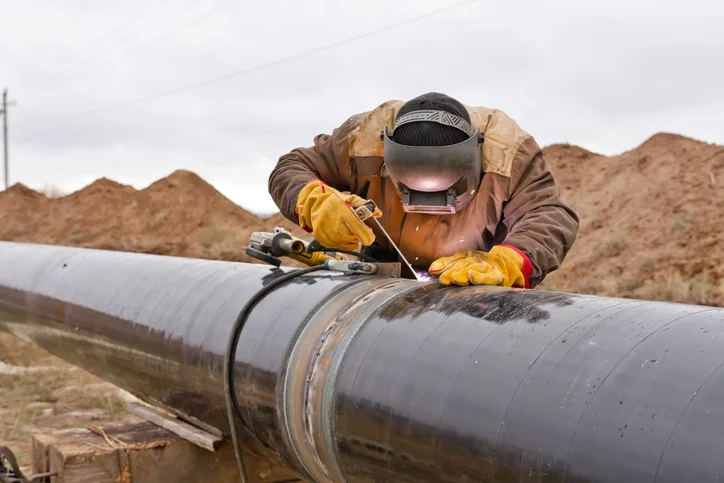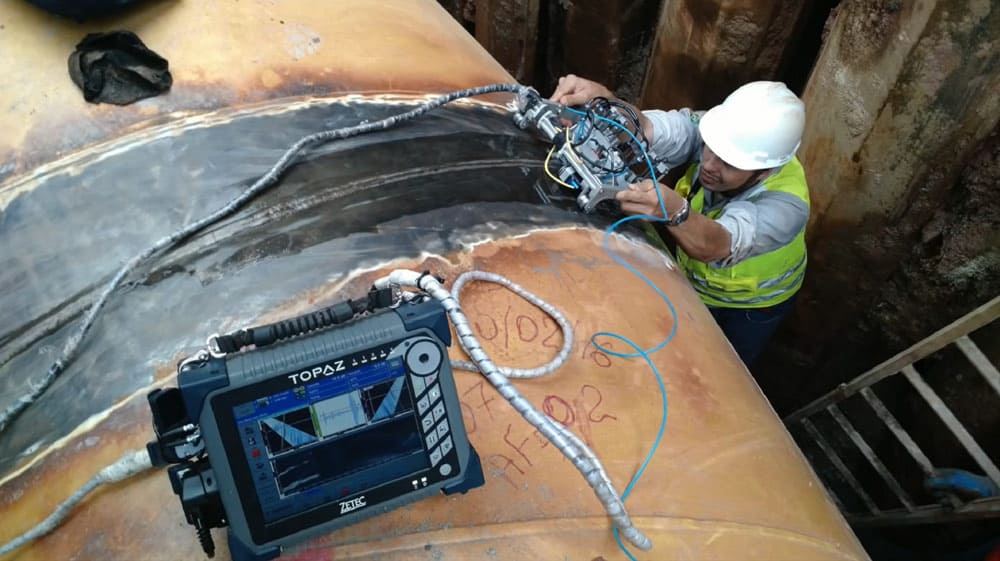Pipeline Welding Inspection: Cutting-Edge Methods for Accurate Assessments
Pipeline Welding Inspection: Cutting-Edge Methods for Accurate Assessments
Blog Article

Finest Practices for Pipe Welding Assessment: Strategies, Criteria, and Procedures to Attain Quality Control and Compliance
Reliable pipeline welding examination is vital for ensuring the stability and safety of important infrastructure. By utilizing a mix of techniques such as visual assessment and advanced non-destructive screening approaches, along with adherence to established market criteria like those from ASME and AWS, organizations can dramatically improve their top quality guarantee processes. However, the application of these finest practices presents numerous obstacles that warrant careful consideration. Understanding the complexities associated with each stage of inspection is important to accomplishing conformity and dependability in pipe systems. What details strategies can be employed to navigate these challenges properly?
Importance of Welding Inspection
The integrity of welded joints is critical in ensuring the safety and integrity of pipe systems. Correct welding methods and complete assessment processes are crucial to avoid failures that can bring about tragic incidents, ecological damage, and loss of life. Pipeline Welding Inspection. Welding examination functions as a safety net, identifying defects such as splits, porosity, and incomplete fusion prior to they rise right into severe problems
Moreover, pipe systems usually run under high pressure and severe conditions, making the high quality of welds a lot more vital. Regulatory conformity is another significant facet, as different standards determine the quality control procedures that have to be followed in pipe building and upkeep. Failure to abide can result in financial losses and lawful implications.

The role of welding assessment prolongs past mere verification of handiwork; it encompasses the assurance of lasting operational stability. This entails a methodical technique that consists of not just aesthetic examinations yet also progressed non-destructive testing approaches. Eventually, reliable welding examination is a financial investment in the long life and security of pipeline systems, ensuring they work as meant while decreasing dangers connected with product shortages.
Trick Evaluation Strategies

Visual examination, typically the initial line of defense, permits for the identification of surface flaws such as cracks, damages, and porosity. Ultrasonic screening employs high-frequency sound waves to detect interior imperfections, supplying a complete assessment of weld stability. This non-destructive approach is specifically effective for determining discontinuities that might not be visible externally.
Radiographic screening involves the use of X-rays or gamma rays to create photos of the bonded joint, exposing inner defects. This method supplies thorough understandings but may require specific devices and safety and security factors to consider. Lastly, magnetic particle testing is effective for identifying surface area and near-surface stoppages in ferromagnetic materials, using magnetic areas and great iron fragments.
Sector Standards and Regulations
Compliance with industry standards and regulations is essential for making sure the high quality and security of pipeline welding examinations. These criteria supply a framework for best techniques in welding processes, products, and examination methods, allowing companies to lessen problems and enhance the stability of pipeline systems. Trick bodies such as the American Society of Mechanical Designers (ASME), the American Welding Culture (AWS), and the International Organization for Standardization (ISO) collection forth guidelines that are widely recognized and taken on within the market.
In the United States, guidelines from the her explanation Pipeline and Hazardous Products Safety Management (PHMSA) control the safety and security of pipeline procedures, mandating strenuous examination methods. These standards not only offer to safeguard public safety and the atmosphere but additionally guarantee conformity with legal and legal commitments. Adherence to the appropriate codes, such as ASME B31.3 for procedure piping, is vital for preserving operational effectiveness and regulatory compliance.
In addition, continuous updates and modifications to these standards show technological innovations and developing market techniques, emphasizing the demand for companies to stay informed and train workers accordingly. Eventually, durable conformity with established requirements cultivates trust and integrity in pipeline infrastructure, securing both properties and stakeholders.
Efficient Assessment Treatments
Effective examination treatments are vital for recognizing potential problems in pipeline welds and making sure the total integrity of the system. An organized approach to evaluation includes a number of crucial stages, consisting of pre-weld, in-process, and post-weld inspections. Each phase plays an important function in preserving quality control.
During pre-weld assessment, it is vital to examine the products and joint configurations, ensuring compliance with job requirements. In-process examinations entail monitoring welding strategies and specifications, such as heat input and travel rate, to avoid issues from taking place. This phase enables real-time modifications to welding methods.
Post-weld evaluations include non-destructive screening (NDT) techniques like radiography, ultrasonic testing, and magnetic fragment screening. These techniques help detect inner and surface area defects that might jeopardize the pipeline's capability. Paperwork of all examination tasks is critical, providing a deducible document that sustains compliance with sector requirements.
Training and certification of examination employees additionally boost the efficiency of these treatments. By sticking to a structured assessment protocol, companies can reduce dangers, ensure conformity, and ultimately supply pipelines that fulfill strict safety and security and efficiency needs.
Typical Difficulties and Solutions
Pipe welding examination presents several common challenges that can impact the high quality and security of the final item. One considerable difficulty is the irregularity in welding techniques and materials, which can cause irregular weld high quality. To resolve this, it is vital to establish standardized treatments and training for welders, guaranteeing a consistent approach across jobs.

Ecological aspects, including temperature level and humidity, can also influence the welding process, possibly causing cracks or insufficient combination. Implementing regulated environments and sticking to pre-weld procedures can minimize these dangers.
Conclusion
In verdict, the implementation of ideal methods for pipe welding assessment is important for making certain quality control and conformity with industry requirements. A thorough method, including different techniques such as visual, ultrasonic, and radiographic screening, helps with the recognition of defects throughout all stages of the welding procedure. Pipeline Welding Inspection. Adherence to developed policies and reliable evaluation treatments not just enhances the dependability and safety and security of pipeline systems read review however additionally mitigates dangers connected with welding defects, consequently advertising total operational integrity
Compliance with market criteria and policies is crucial for making sure the high quality and safety and security of pipeline welding assessments. These standards give a structure for finest techniques in welding procedures, products, and evaluation methods, enabling companies to reduce defects and enhance the integrity of pipeline systems.In the United States, policies from the Pipeline and Hazardous Materials Security Administration (PHMSA) regulate the safety of pipe procedures, mandating strenuous inspection protocols. A systematic method to evaluation encompasses numerous vital stages, consisting of pre-weld, in-process, and post-weld examinations.In verdict, the execution of finest methods for pipeline welding evaluation is vital for making certain top quality guarantee and compliance with industry standards.
Report this page